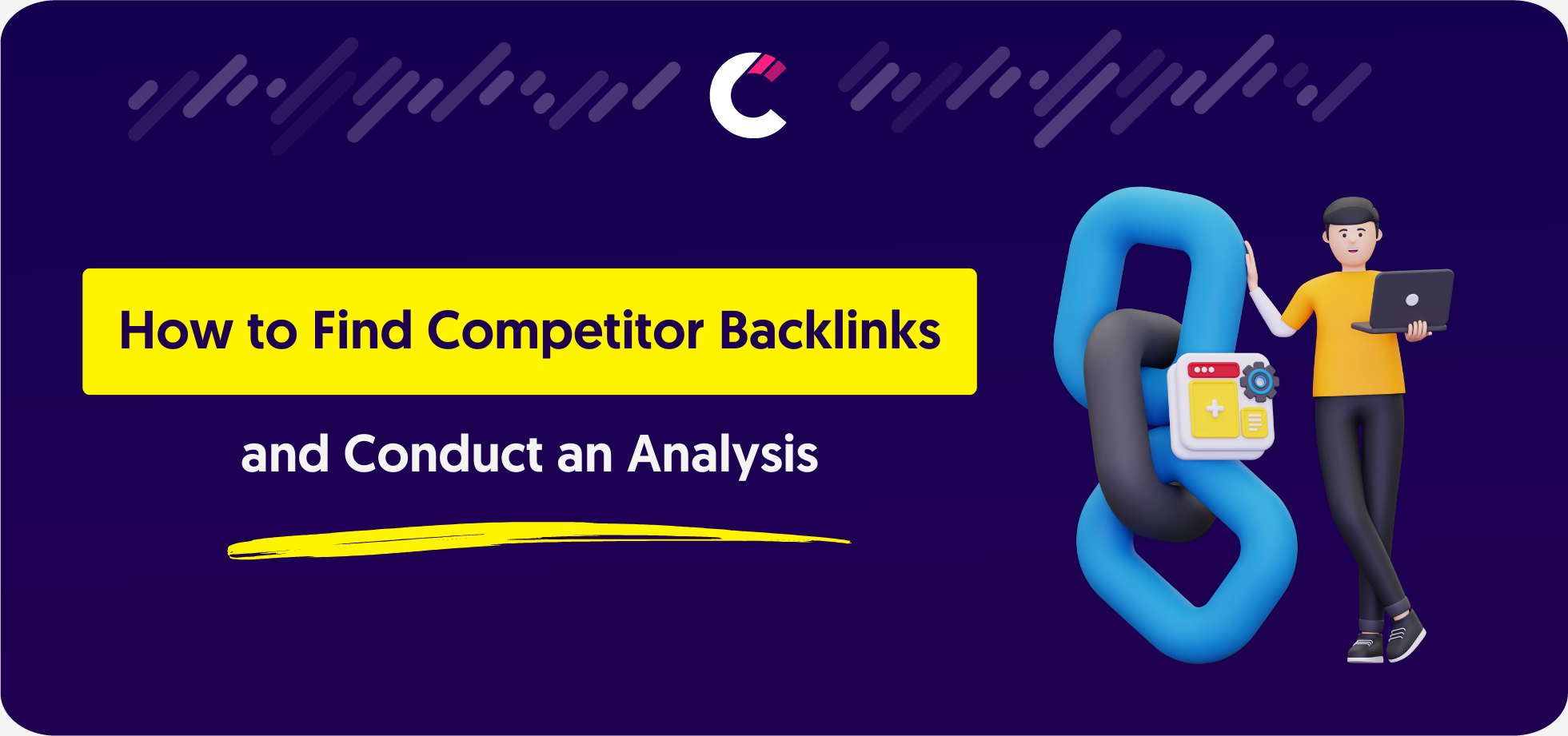
Discovering the strategies behind your competitors’ backlinks can be a key to achieving SEO success. Every backlink to your competitor’s site represents a potential opportunity for your own SEO strategy. With approximately 500 monthly searches, the interest in understanding competitor backlinks highlights its importance as a crucial tactic for anyone aiming to enhance their website’s visibility and effectiveness.
Competitor backlinks refer to the inbound links that direct internet users from other websites to your competitors’ online spaces. These links play a pivotal role in search engine optimization (SEO) because they act as endorsements, signaling to search engines that the content on these sites is valuable, credible, and deserves a high ranking in search results. The process of identifying these links is not just about counting them or knowing their origins.

Understanding the source and nature of your competitors’ backlinks offers key insights into successful content and strategies within your industry. It reveals the types of content that attract backlinks, identifies active websites and authors in your niche, and sheds light on the SEO strategies your competitors employ. Armed with this information, you can refine your own link-building approach to match or surpass the efforts of your competition.
Competitor backlink analysis involves examining the backlinks that lead to your competitors’ websites, aiming to understand the characteristics of these links, their authority and their traffic. This analysis is crucial for strategizing, as it helps uncover not only the sources of these backlinks but also their quality and the strategies behind acquiring them. The goal is to use this information to improve your own SEO strategies.
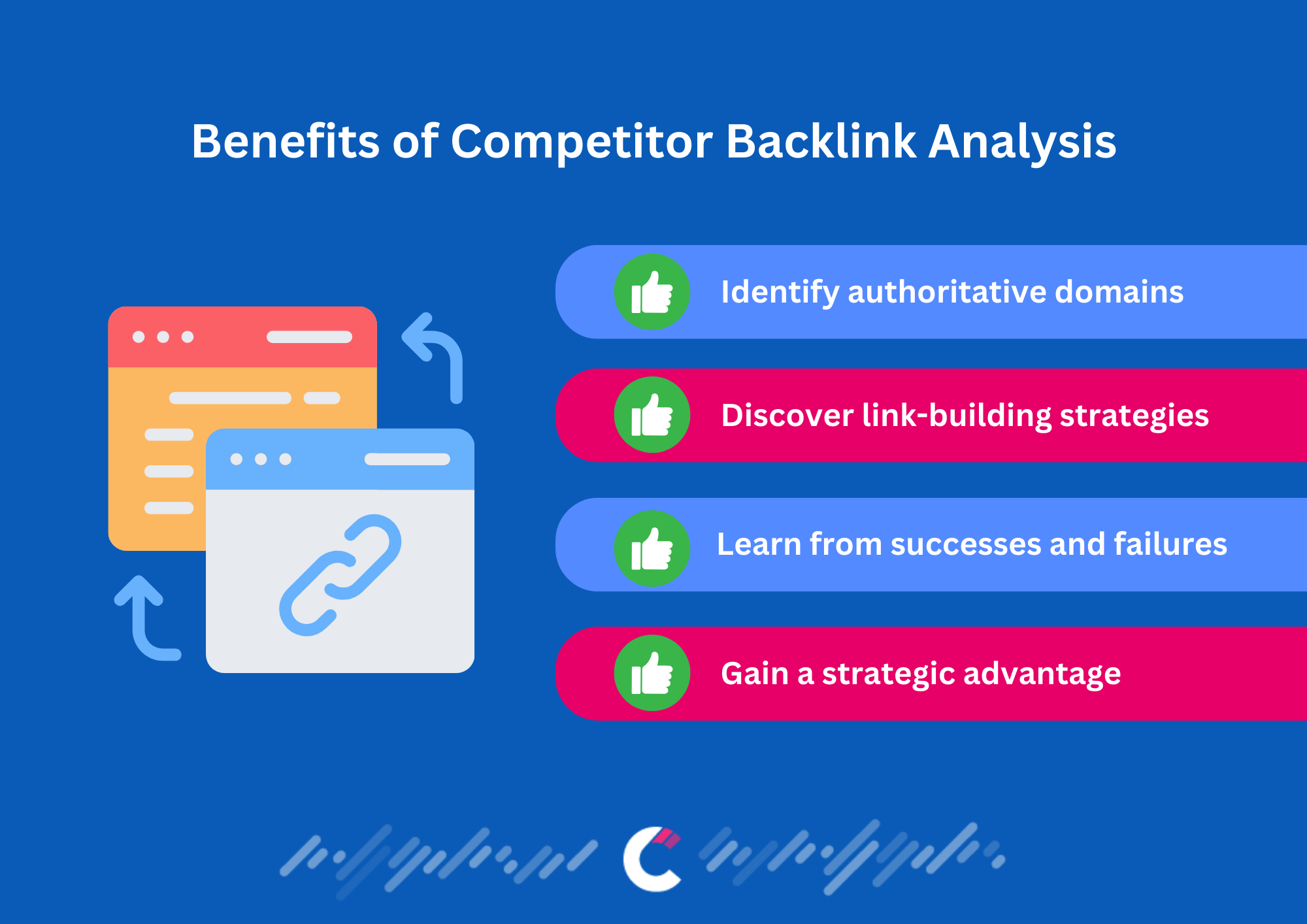
Identify authoritative domains: Discover domains with high authority that might be interested in linking to your content, enhancing your website’s credibility and SEO.
Discover effective link-building strategies: Uncover the tactics your competitors use to acquire backlinks, providing you with actionable strategies to implement.
Learn from successes and failures: Analyze what has worked well or not for your competitors, allowing you to avoid common pitfalls and capitalize on proven methods.
Gain a strategic advantage: Use insights gained from the analysis to boost your site’s authority and improve its ranking in search engine results, giving you a competitive edge.
.
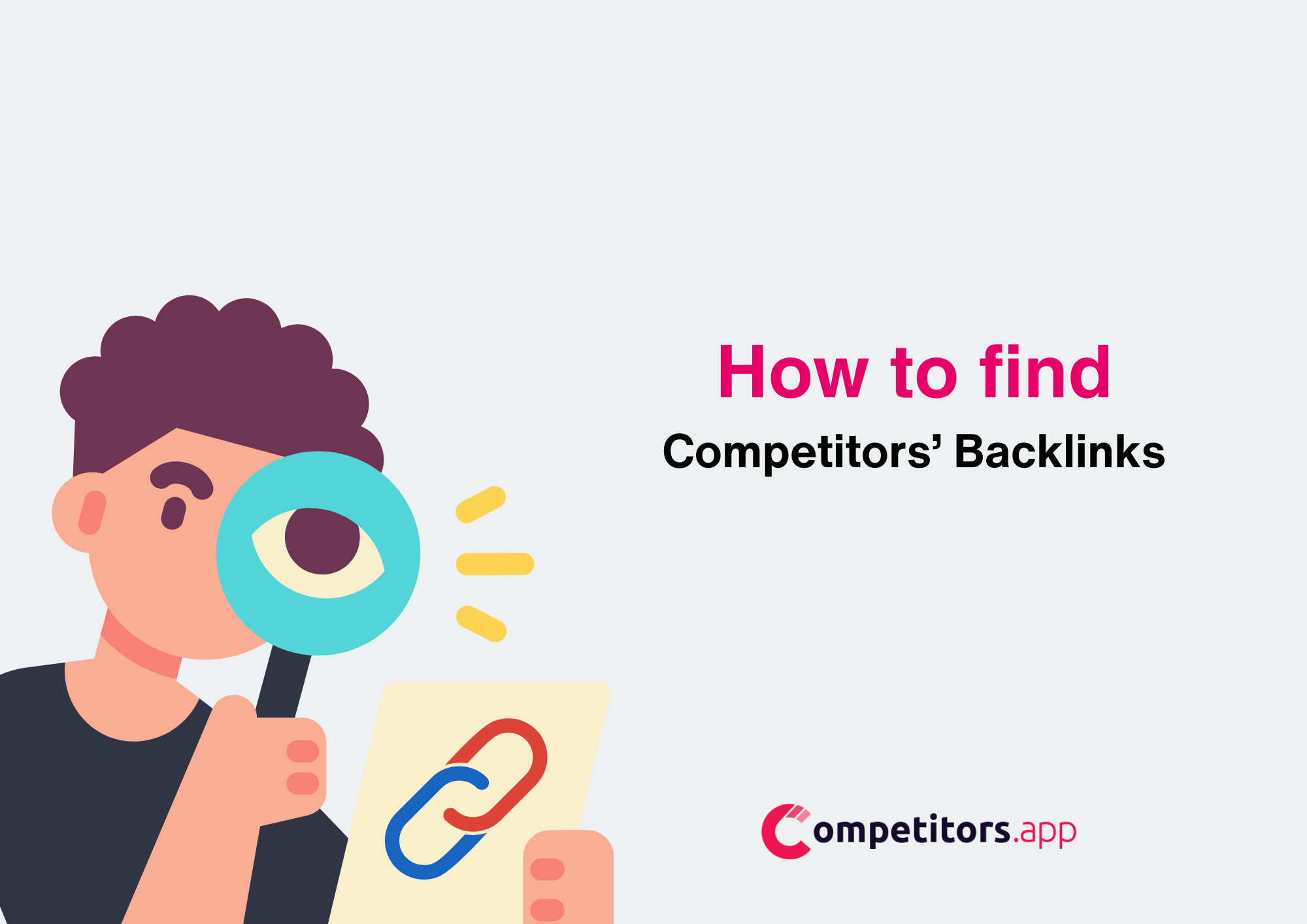
The process of uncovering your competitors’ backlinks is a structured approach that involves several key steps, each designed to give you a comprehensive view of the backlink landscape within your industry.
The first step in finding your competitors’ backlinks is to pinpoint the main keywords relevant to your niche. These keywords are the terms your target audience uses when searching for products, services, or information in your industry. Identifying these keywords helps you understand the competitive landscape and who your main SEO competitors are. To find these keywords you can use our Free Competitor Keyword Finder which will help you understand which keywords your competitors are ranking for.
Once you have a list of main keywords, the next step is to identify who your backlink competitors are. These are the websites that rank well for your chosen keywords and are likely to have a strong backlink profile. Usually these websites fall into two different categories:
These competitors are in direct competition with your website across a range of keywords and topics. Analyzing their backlinks can give you insights into the broader strategies they’re using to maintain their SEO dominance.
Page-level competitors may not compete with you across your entire website but have pages ranking well for specific keywords you’re targeting. Understanding the backlinks to these specific pages can provide tactical insights into achieving high rankings for particular keywords.
Once you’ve identified these competitors the next step is to go and find their backlinks on a page or domain level.
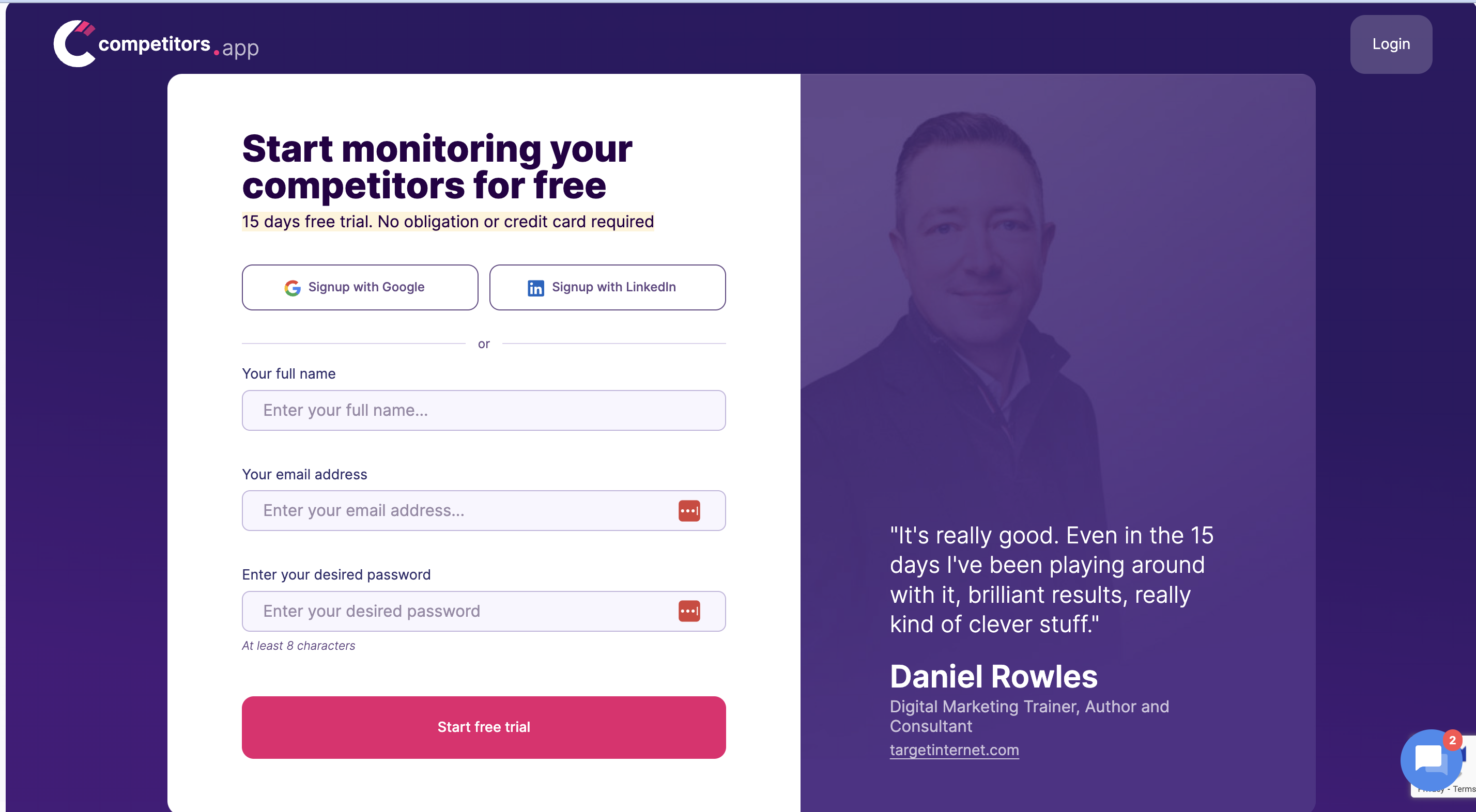
First, create an account on Competitors.app. You'll need to provide some basic information about your business and your competitors. The setup process is straightforward and user-friendly.

Once your account is set up, add the competitors you want to analyze. You can usually do this by entering their website URLs. Competitors.app allows you to track multiple competitors, giving you a comprehensive view of your competitive landscape.

Look for a section dedicated to SEO or backlinks in the dashboard. Competitors.app collects data on your competitors' backlinks, including new backlinks they acquire over time.
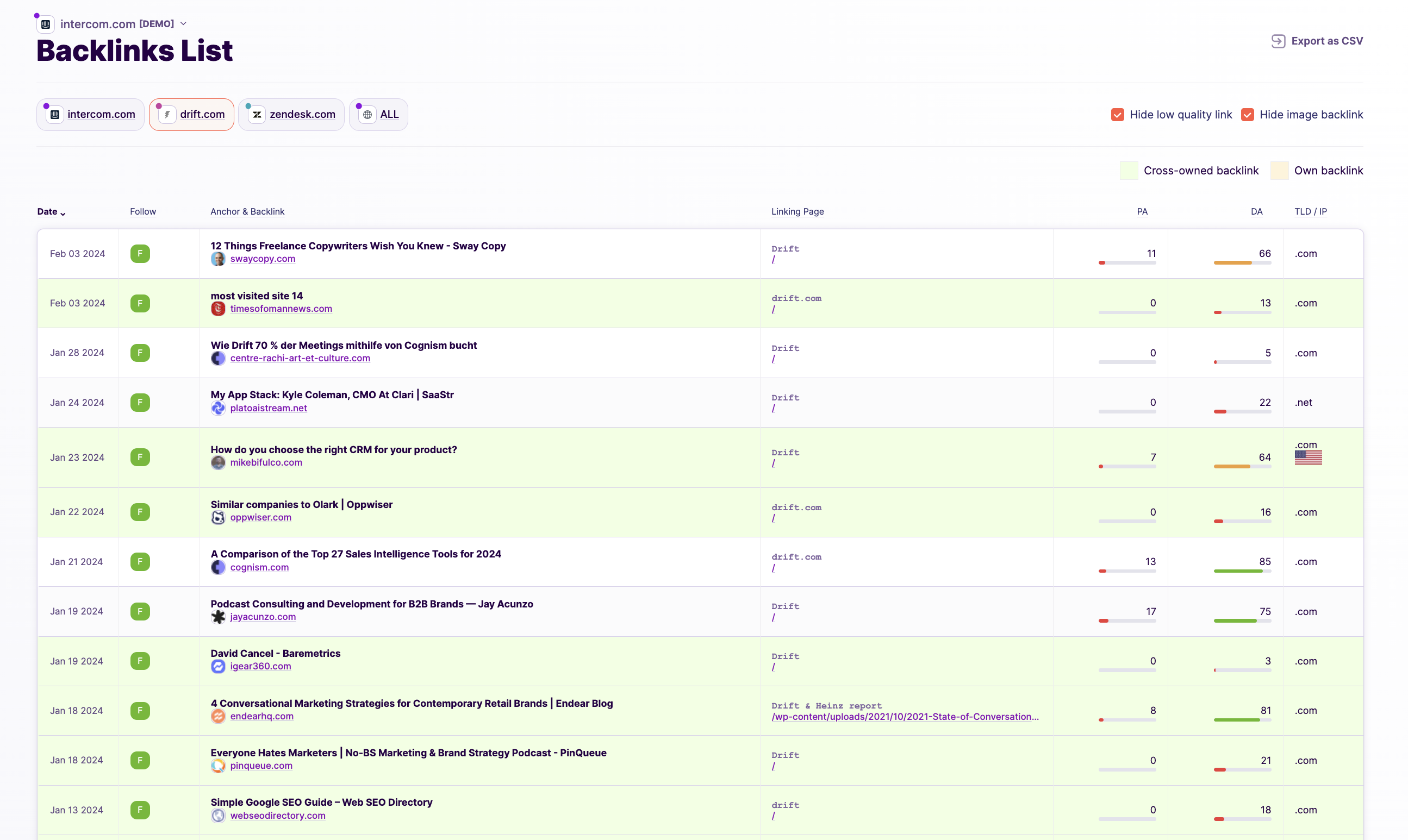
In the backlinks section, you'll find detailed information about each backlink, such as the source website, the anchor text used, and the date the backlink was added. This information is crucial for understanding the backlink strategies of your competitors.

Use the data to identify high-quality backlink opportunities for your own website. Look for patterns in the types of content or websites that link to your competitors. These could be potential targets for your own outreach and link-building efforts.

Competitors.app allows you to track changes in your competitors' backlink profiles over time. This can help you identify trends, such as increases in backlink acquisition during certain periods, which might correlate with specific marketing campaigns or content releases.
Evaluating your competitors’ backlinks requires a highly detailed analysis to understand the quality, relevance, and potential impact of these links. Here’s more context on how to approach this:
Evaluate the linking domains: Assess the sources that link to your competitors. High-authority domains, which are trusted sources in their specific industry or niche, can significantly improve your site’s SEO and visibility if they link back to you.
Checking the relevancy and the geographical location of linking sites: It’s important to consider not just the authority of a domain but also its relevance to your business and its geographical location. A backlink from a site closely related to your industry or market can be more beneficial than one from a high-authority but unrelated site. The geographical location of the linking site can also affect local SEO strategies, making it a crucial consideration for businesses targeting specific regions.
Checking Link Attributes and Context: This step involves examining the technical details of a link, such as whether it’s set to “nofollow” or “dofollow”, and the context in which it appears. The attributes and context of a link can influence its relevance and usefulness, thus helping to improve your SEO efforts.
A comprehensive competitor backlink analysis builds on evaluating backlinks by collecting and categorizing backlink data from SEO tools. This process involves organizing backlinks by their type, authority, and relevance; identifying patterns and strategies like guest blogging or partnerships; and benchmarking your own backlink profile against your competitors’. The final step is developing an action plan focused on acquiring new, high-quality, and relevant backlinks based on the insights gained.
Pitfall: Focusing on the authority of the linking site without considering the relevance of the link to your niche or industry.
Solution: Prioritize backlinks from sites that are closely related to your content. A relevant link from a moderately authoritative site within your niche can be more valuable than a link from a high-authority site that’s unrelated.
Pitfall: Pursuing backlinks without considering the user experience on the linking page.
Solution: Look for backlink opportunities on pages with high user engagement and relevance to your content. A backlink should provide value to the reader, guiding them to additional useful information.
With insights from your competitor backlink analysis in hand, you can now craft and implement strategies to enhance your own link-building efforts:

As mentioned before, the first step in crafting an effective backlinking strategy is to figure out what your competitors are doing right. This involves a bit of digital sleuthing. Tools like Competitors App can be invaluable here, allowing you to peek into your competitors' backlink profiles. Look for patterns in the types of content that are earning them backlinks, the domains that link to them most frequently, and the anchor texts that are used. Are they leveraging guest posts, sponsored content, or partnerships? Understanding these elements can provide a blueprint for your own link-building effort

Now, "steal" might sound a bit dramatic, but in the world of SEO, it's perfectly legitimate to aim for the same backlinks your competitors have. Once you've identified where your competitors are getting their links from, it's time to get those websites to link to you as well. This could involve reaching out to the same blogs or forums with a proposal for why your content is also valuable or offers a different perspective. It could also mean looking for broken links on these sites and suggesting your content as a replacement. The key is to provide value, making it a win-win situation for both you and the site linking to you.

Analyzing your competitors’ backlink profiles can also reveal much about their content strategy and what makes them successful. Pay attention to the content that garners the most links: Is it detailed guides, comparative studies, infographics, or something else? By understanding what works for them, you can tailor your content to be more link-worthy. However, it's not just about imitation; it's about improvement. Think about how you can take what they do well and do it even better, making your content the preferred choice for backlinks.

Finally, while learning from your competitors is invaluable, your ultimate goal should be to craft a backlink strategy that sets you apart. This means taking the insights you've gained from your analysis and using them to create something unique to your brand. Maybe it's a signature style of content, an innovative content format, or a particular niche you can dominate. Whatever it is, it should play to your strengths and appeal to your target audience. Remember, the most effective backlink strategy is one that not only earns links but also builds your brand and engages your audience.
The best tool for finding competitor backlinks often depends on your specific needs and budget. Competitors.app is the top choice for many SEO professionals due to their comprehensive databases and detailed analysis features. Each tool offers unique strengths, such as Ahrefs’ user-friendly interface and SEMrush’s integrated digital marketing tools.
For those looking for free options, Competitors.app, Ubersuggest and Moz’s Link Explorer offer limited capabilities to analyze competitor backlinks without a subscription. Although these free tools may not provide as comprehensive data as their paid counterparts, they are useful for initial analyses and smaller-scale projects.
While specialized tools greatly simplify the process and offer deep insights, it is technically possible to conduct a backlink analysis manually. This would involve using search engine operators to find mentions of your competitors and manually checking for backlinks. However, this method is time-consuming and may not provide a complete picture.
Competitor backlinks can offer insights into successful SEO strategies and reveal opportunities for your own backlink building. By understanding who links to your competitors, you can identify potential partners for your own link-building efforts. Additionally, analyzing the quality and relevance of these backlinks can help refine your SEO strategy.
The frequency of competitor backlink analysis depends on the competitiveness of your industry and the pace at which your SEO landscape evolves. A quarterly review is a good practice for most businesses, but more dynamic sectors may benefit from monthly analyses.
If your competitors have more backlinks, focus on the quality and relevance of your own backlinks rather than the quantity. Sometimes, having fewer high-quality backlinks can be more beneficial than having a large number of low-quality ones. Analyze the strategies behind your competitors’ backlinks and seek to implement more effective tactics.
No, all backlinks are not created equal. Backlinks from high-authority, relevant sites are more valuable than those from low-quality, unrelated sites. The context in which a link appears and whether it is a dofollow or nofollow link also affects its value.
Yes, it is entirely possible to outrank competitors with fewer but higher-quality backlinks. Search engines prioritize the relevance and authority of backlinks over sheer numbers. Focusing on acquiring backlinks from authoritative sites within your niche can lead to better SEO performance than simply amassing a large number of backlinks.